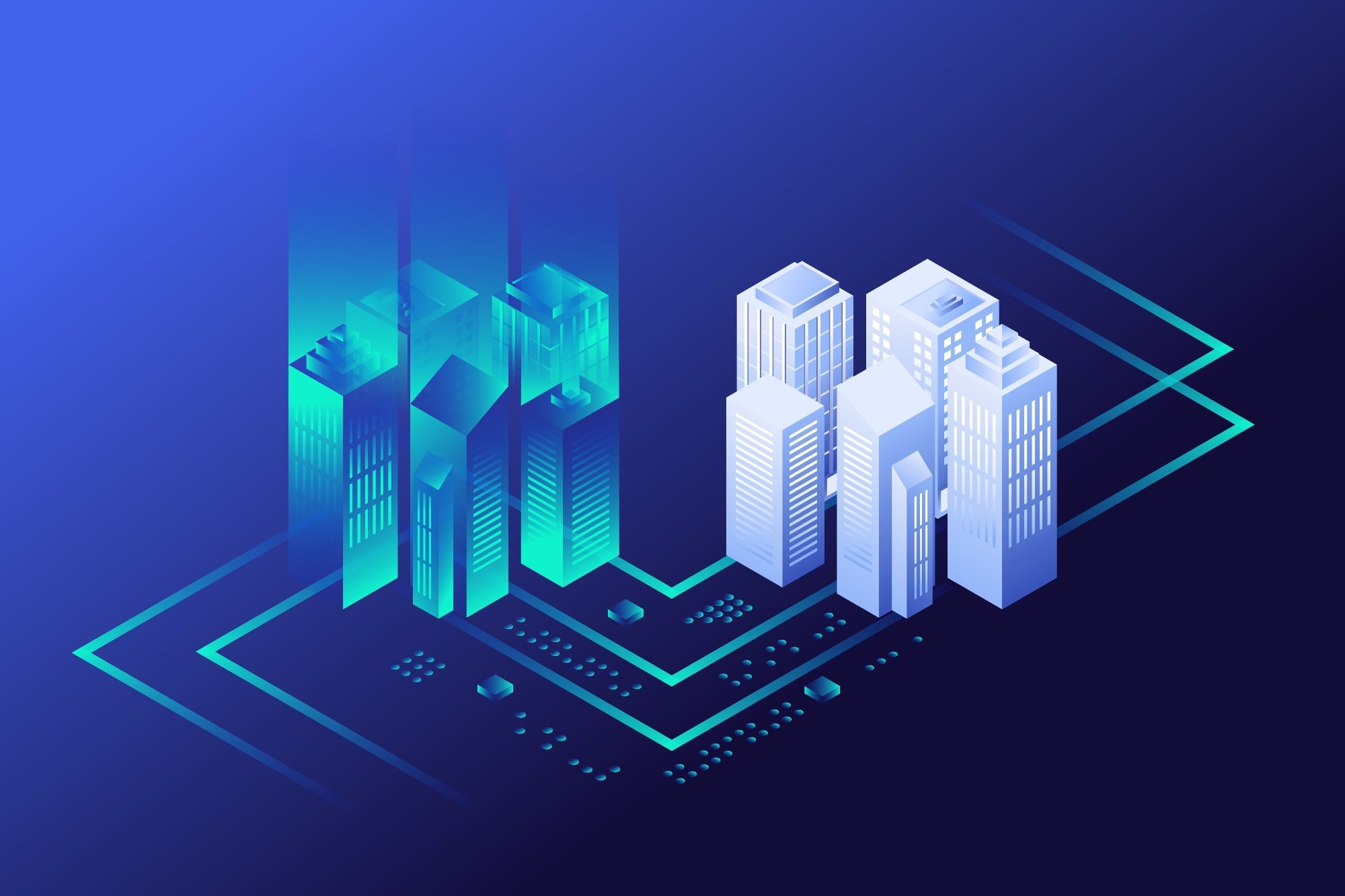The architecture and construction sectors are making use of cutting-edge technological solutions to provide the buildings of the future. Amongst the innovative technologies being leveraged by the sector are digital twins. This article will provide a brief exploration of this subject.

Image Credit: innni/Shutterstock.com
What is a Digital Twin?
Digital twins originated in the groundbreaking work of NASA in the 1960s, when the space agency was looking for new ways to safely visualize assets in space. They can be thought of as an information model rather than a traditional 3D model.
Essentially, a digital twin is a digital representation of a physical asset, such as buildings, bridges, engine parts, automobiles, and airplanes. Digital twins are eminently more dynamic than static data models, being essentially “living models” which evolve in real time.
Digital twins can communicate with their real-world, physical counterparts through data exchange over the asset’s full lifecycle. This is due to the employment of cutting-edge technologies such as AI, IoT, and machine learning.
The power of a digital twin lies in its dynamic nature. Users can safely and intuitively explore the twin’s physical counterpart, making real-time decisions and enhancing predictive maintenance capabilities. Problems can be solved before they occur, opportunities can be explored, and future plans can be made safely with minimal need for physical intervention.
Digital Twins in Architecture
The construction and architecture sector is, it can be said, lagging behind other industries when it comes to embracing digitization. However, this has changed in recent years, with a growing recognition within the sector of the capabilities innovative digital technologies bring to the table.
In architecture, digital twins are utilized to provide a comprehensive, dynamic replica of built assets and building systems. They can be used to model buildings, infrastructure elements such as dams and bridges, or complex, interconnected ecosystems such as business parks, road and rail networks, and even entire cities.
Digital twins are created at the initial stages of a new project in line with desired project goals and outcomes. Owners and AEC teams collaborate on the creation of the digital twin to define these goals and outcomes.
Once handed over to the project owner, the digital twin collects operational data on the physical asset through a multivariate set of data points from elements such as HVAC systems, maintenance and parts data, and IoT sensors. Data is provided on key factors such as the environment, building elements, and users.
By utilizing a digital twin, project managers, building managers, and engineers can use this operational lifetime data to fine-tune performance, manage long-term maintenance, and even support any decommissioning efforts.
A digital twin can be employed to optimize built assets in many ways, such as providing predictive maintenance capabilities for assets in extreme environments such as oil and gas wells, optimize retail spaces based on customer patterns, and improve the efficiency of healthcare spaces.
How is a Digital Twin Created?
A three-step approach is taken when creating a digital twin: creating the blueprint, building the initial twin itself, and then boosting the twin’s capabilities.
The crucial first step when creating the twin’s blueprint is aligning all stakeholders. A clear vision of what the twin will represent, how it will operate over its lifetime, how it will complement the physical asset, and how its capabilities will evolve. In addition, all stakeholders must understand all governance and ownership structures.
Once all stakeholders are on board and understand the project fully, the basic digital twin is constructed over a three-to-six month period, starting with the core data product being built. For a digital twin to be successful, it must be based on a strong and balanced data model.
Once the initial twin is created, the final stage is to expand its capabilities. This involves adding new layers of analytics and data. This stage gives the twin the ability to provide prescriptions and simulations using advanced modeling techniques and artificial intelligence, evolving it beyond merely providing a representation of the physical asset or environment.
Some Companies Offering Digital Twins for the Architecture Sector
A number of companies offer digital twin solutions for the architecture and construction sectors. Three of the main companies working in this space are:
- Autodesk: Autodesk develops digital twins that integrate multivariate real-time data from physical assets to create powerful and dynamic insights across the lifecycle of a project.
- Stantec: Stantec’s solutions help engineers and architects explore “what-if” scenarios such as security events, design change impacts, and disruptive weather events.
- Bentley Systems: Offers digital twin solutions to help optimize asset performance, providing powerful simulation and monitoring capabilities for many different types of building and infrastructure projects.
In Summary
Digital twins can be constructed to provide a complementary virtual tool for assets from the smallest building management element to entire cities and complex, interconnected networks of road, rail, and infrastructural elements.
This powerful technology offers dynamic capabilities for engineers and architects that conventional static models cannot. They can be used to provide real-time monitoring and predict future events based on multiple data points and advanced, AI-enabled modeling techniques over a project or asset’s lifecycle.
More from AZoBuild: Use of Building Information Modeling Technology in Planning
References and Further Reading
Autodesk (2022) What Is a Digital Twin? How Intelligent Data Models Can Shape the Built World [online] Autodesk.com. Available at:
https://www.autodesk.com/design-make/articles/what-is-a-digital-twin
Fearson, A (2021) Digital twins offer "a very powerful way of developing our cities" say experts [online] Dezeen.com. Available at:
https://www.dezeen.com/2021/07/09/digital-twins-develop-cities-digital-design-architecture/
Autodesk (homepage) Available at:
https://www.autodesk.com
Disclaimer: The views expressed here are those of the author expressed in their private capacity and do not necessarily represent the views of AZoM.com Limited T/A AZoNetwork the owner and operator of this website. This disclaimer forms part of the Terms and conditions of use of this website.